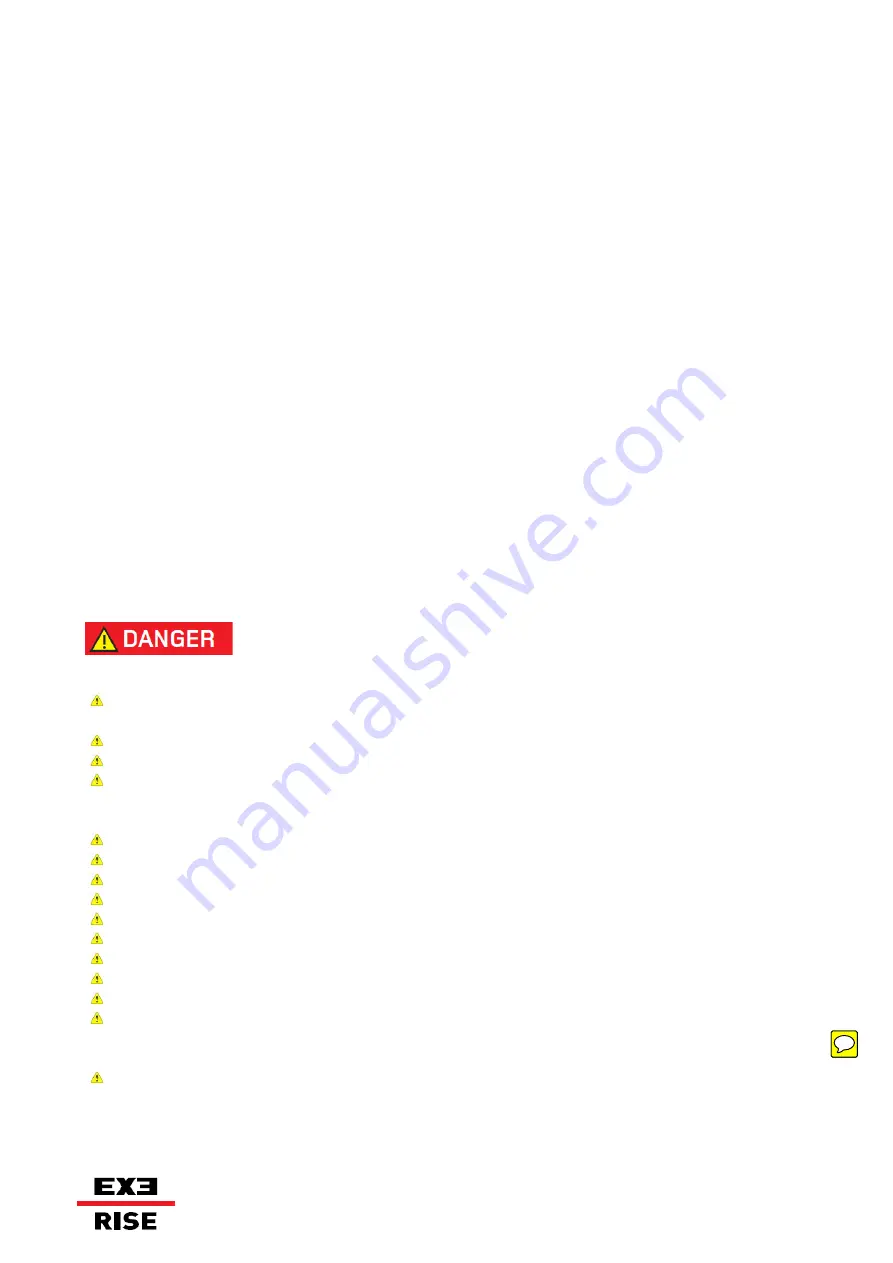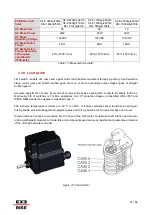
16 / 66
2.3
SAFETY WARNING FOR INSTALLATION, ASSEMBLY AND DISASSEMBLY
The hoist must be assembled and disassembled only by authorized and qualified operator. The necessary
qualifications for planning, assembly, disassembly, and activation, depend on the degree of risk and the
location and type of job.
Operator are required to provide current overload protection and grounding on the branch circuit section in
keeping with the code. Check each installation for compliance with the application, operation and
maintenance sections of these articles.
This manual gives the necessary information for safe installation, use, and maintenance in a generic working
environment. Since it is not possible to foresee all the risk conditions of the working environments in which
the hoist will be used, the person responsible for the management and supervision of the installation,
assembly and disassembly must produce their own specific risk assessment each time the hoists are used.
The hoist must be tested only by authorised and qualified operator. The person in charge of management
and supervision is liable to give his approval to the use of electric chain hoists. Such approval can only be
given on condition that the occurred carrying out of the tests is duly proved. Every possible transfer to other
users must be documented in writing.
The hoist is equipped with various guards and devices designed to prevent accidents and to ensure the
product complies with various safety standards.
2.4
SAFETY WARNING FOR INCORRECT USE
Do not lift people. Using the EXE-Rise chain hoist to carry people is strictly forbidden.
Do not use the hoist if it is damaged, malfunctioning, or functioning in an unusual way or exhibits
unusual or incorrect movement or anomalous noises.
Do not use the hoist if the chain is distorted, corroded, damaged, or worn out.
Do not make modifications nor apply accessories other than those provided by LITEC Italia S.r.l..
Accessories causing overstressing or leading to accidental unexpected overloads or limiting the free
handling of the load, are not allowed. Therefore only lifting accessories that interpose in a passive way
between the equipment and the load are allowed.
Do not try to lengthen the lifting chain or repair it if damaged.
Do not hit, deform, or crush the hoist chain; danger of cracks or broken links may occur.
Do keep the hoist and chain away from open fire or flame.
Do not use the lifting chain as sling and do not wrap the chain around the load.
Do not put tools or foreign bodies in the links of the chain.
Do not place the load on the point or on the spring latch of the hook.
Do not perform welding to any component.
Do not use the hoist if it is not perfectly efficient, even if it can still function.
Do not use the hoist with worn out, open hook or with missing spring latch.
Do not lift loads exceeding the maximum working load limit of the hoist (
In Motor-down mode the self-
weight of the hoist should be taken into consideration. To do this, subtract the self-weight of the hoist
from 5% of its rated capacity. The difference in weight should be added to your payload calculations
).
Do not allow the load to swing or twist while lifting.






































